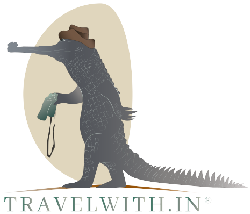This holiday is ideal for those of you who like being in nature, enjoy long (or short) walks and wildlife spotting. Some of the hotels we partner with have good wifi connectivity for those of you looking to work remotely and stay for long duration stays. Others are very secluded and ideal for guests looking to digital detox.
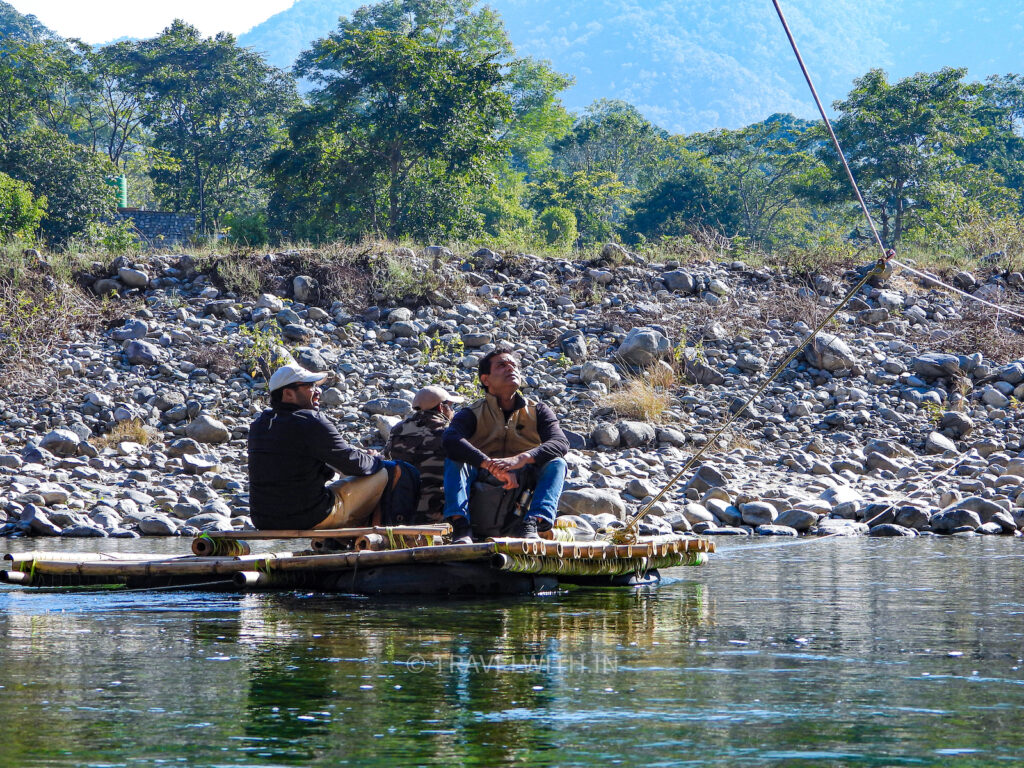
Crossing the Ramganga on a raft
Some of the hotels we partner with are not places where guests party and play loud music or for people with mobility issues as to get to them it requires you to walk up-hill through a forest and even cross a river on a raft. Please note that the location of our partner hotels in this region are far from the safari gates of Corbett National Park. If you are interested in doing jeep safaris in the desginated zones of Corbett National Park and tiger reserve rather than walking safaris in the protected forests then please visit this link.
We recommend the below itinerary and this can be customized depending on your interest and how many days off you have. For instance, you can do 7 nights and 8 days in Corbett, Pangot and Nainital. All three destinations are within a couple of hours drive from each other. For details on Nainital and Pangot click here.
Tawny Fish Owl
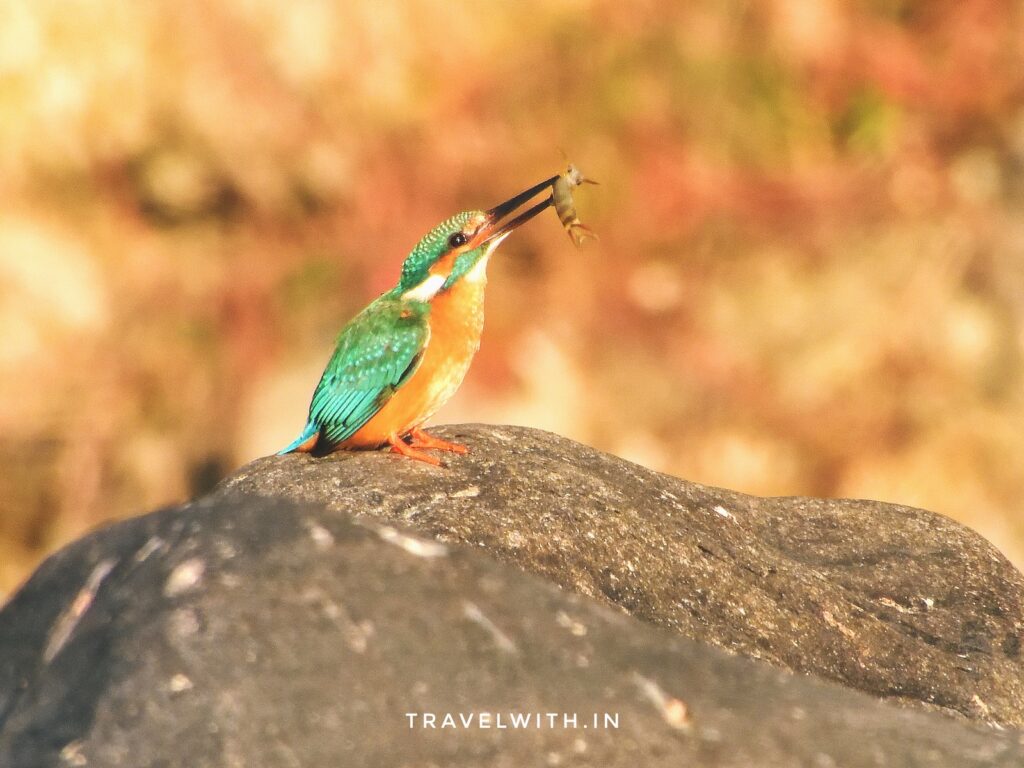
Common Kingfisher with breakfast
Day 1
Drive or take the early morning train from Delhi to Haldwani (train tickets in the Shatabdi train must be booked in advance). If you leave early in the morning from Delhi you should reach the drop off point in Corbett in roughly 7 hours. From the drop off point a team from the lodge you will be staying at will accompany you to an easy-moderate two kilometer hike. Another option is to stay in a premium jungle lodge in Corbett with all the comforts and services offered by a full service hotel.
If you arrive late to the drop off point we can also shuttle you to the eco lodge in a 4×4. At some point in your hike to the Lodge, you will also get on a raft to cross the Ramganga River. After lunch and a round of introductions with the naturalists settle into your rooms, freshen up. If you reach during a reasonable time, one of the naturalist can even take you by the river which is walking distance from the lodge. In the evening bonfire (weather permitting) with soup and snacks, followed by dinner.
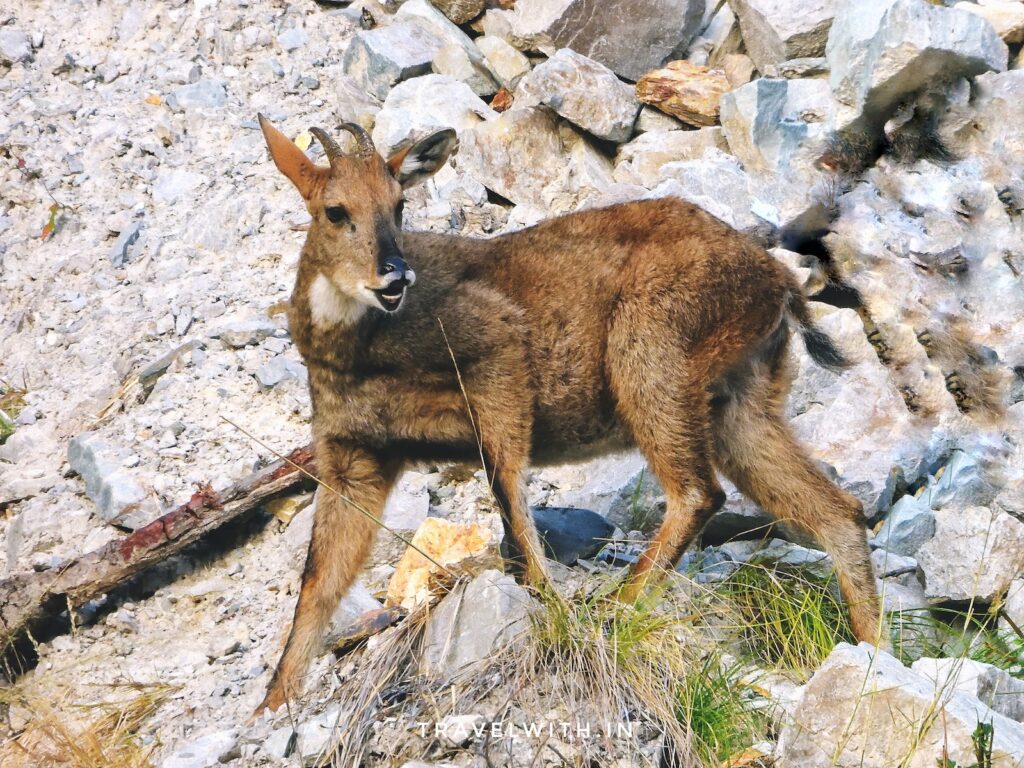
Ghoral Deer
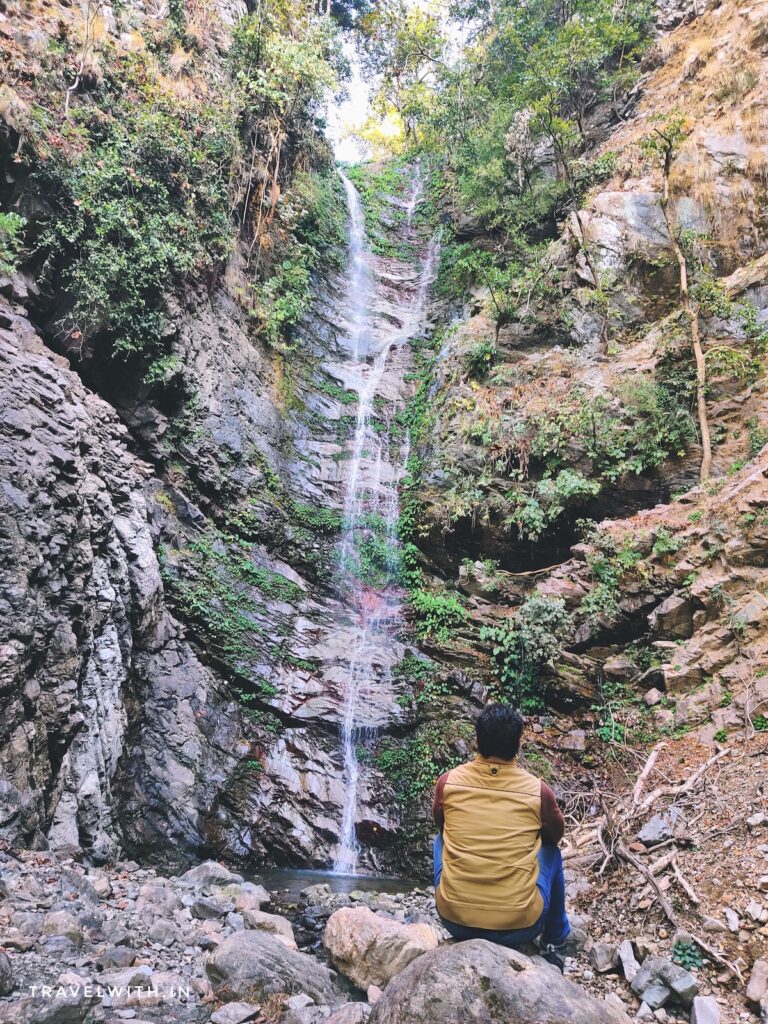
Walking safari to a Waterfall
Day 2
Early morning, go on a walking safari with your naturalist or you can also participate in installing camera traps (subject to weather and permission from the Forest Department) in the reserve forests near the lodge. Camera traps are equipped with infrared triggers or heat sensors and take photos / videos of the subject when they are in movement. It is an important method used globally to obtain critical data about wildlife and their behavior in a non-obtrusive manner. The forests around the jungle lodge are a haven for wildlife and your naturalist will show you how to put up your own camera trap.
After lunch, participate in the afternoon activities such as guided nature walks / walking safaris to spot elusive birds and mammals, river crossing on bamboo rafts or trekking to nearby waterfalls. Back at the lodge for tea, coffee & cookies. Settle down for a wildlife slideshow/presentation/discussion with fellow guests and the naturalists followed by hot soup, snacks and dinner by a crackling bonfire (subject to weather conditions).
Collared Falconet with Kill
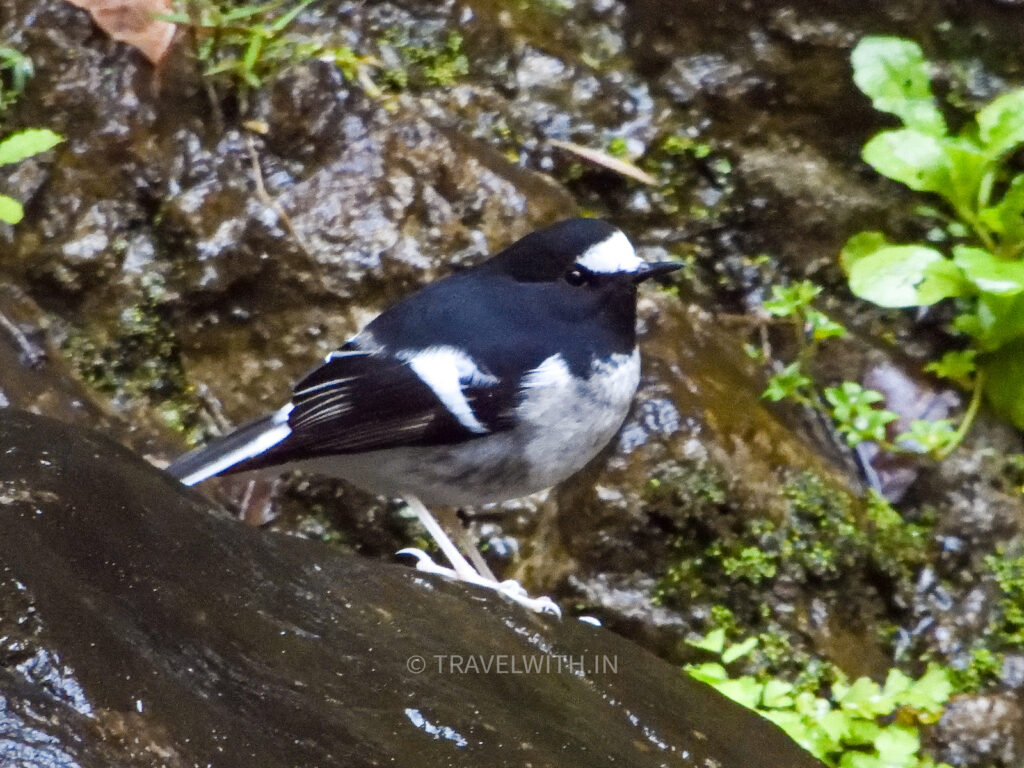
Little Forktail
Day 3 – 4
Early morning get ready to retrieve camera traps and spot pug marks of wild animals around the lodge OR go on walking safaris with your naturalist on of the many trails starting from the jungle lodge. The duration and difficulty of the trail depends entirely on your interest and fitness level. If you want you can sit by the river, in the summer you can take a dip in it too, you can sit for hours on the Machaan to spot wildlife as they come for a drink to the water hole or watch birds while having a scrumptious meal in the open air dining area.
If you installed camera traps, your naturalist can also show you images / videos of wildlife captured in the camera traps. Or post lunch your naturalist can take you on one of many nature trails in the forests again depending on your fitness level. You can also hang out by the Ramganga river to spot birds and other fauna.
Long-billed Thrush Corbett National Park
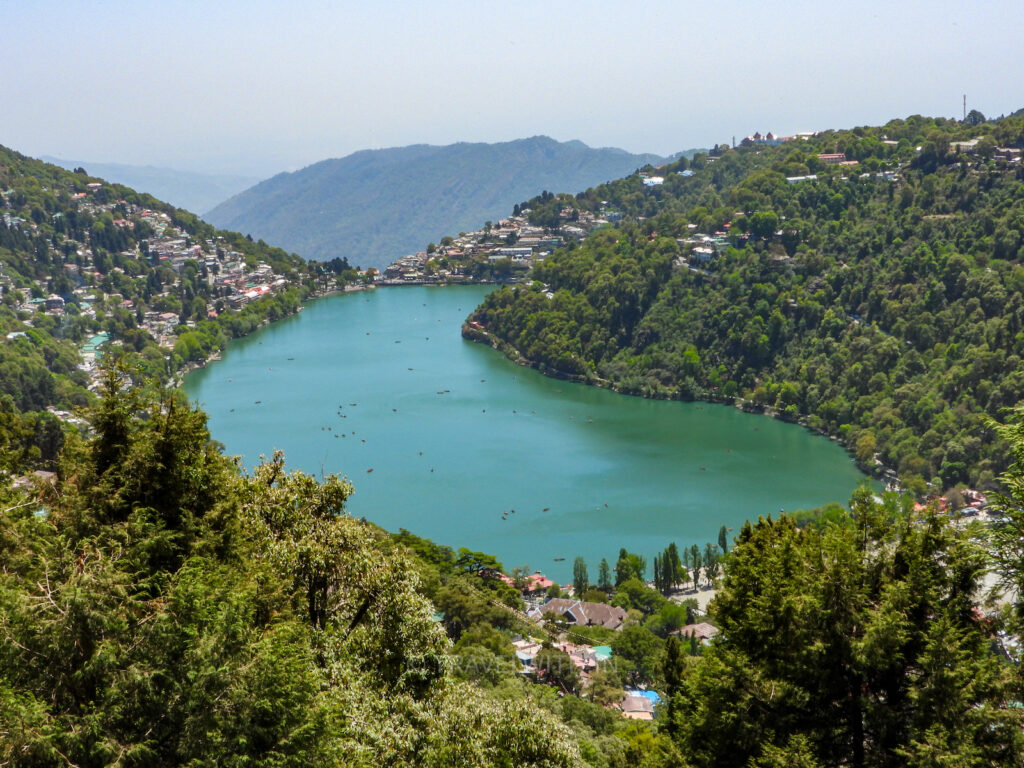
Nainital Lake from the road to Pangot
Day 5
After breakfast, we drive to Pangot (or Nainital) the second leg of our trip. Pangot is a tiny village in the Naina Devi Bird Conservation Reserve and a 3.5 hour drive from Corbett at 2,000 meters amsl. About 30 minutes short of reaching Pangot you can stop to see the kidney shaped Naini lake and if it’s a clear day, you can also see snow clad Himalayan mountain peaks. You will stay in a wilderness lodge in Pangot away from the commercial hustle and surrounded by cedar, rhododendron (red flowers that bloom in spring) and pine trees.
Post lunch, we go bird watching with an experienced guide. Pangot and it’s mountains are home to hundreds of species of birds as it falls in the bird passage migration route. Birds in the upper Himalayan ranges migrate down to the foothills to get away from the biting cold while some other species use it as a nesting ground before they migrate in late spring to the upper Himalayas. Besides the Koklas and Cheer Pheasants (which draw many a bird nerd to Pangot), the Reserve is home to several species of thrushes, vultures, barbets, minivets, owls, shrikes, fly catchers, finches and more.
Cheer pheasants in the Himalayas
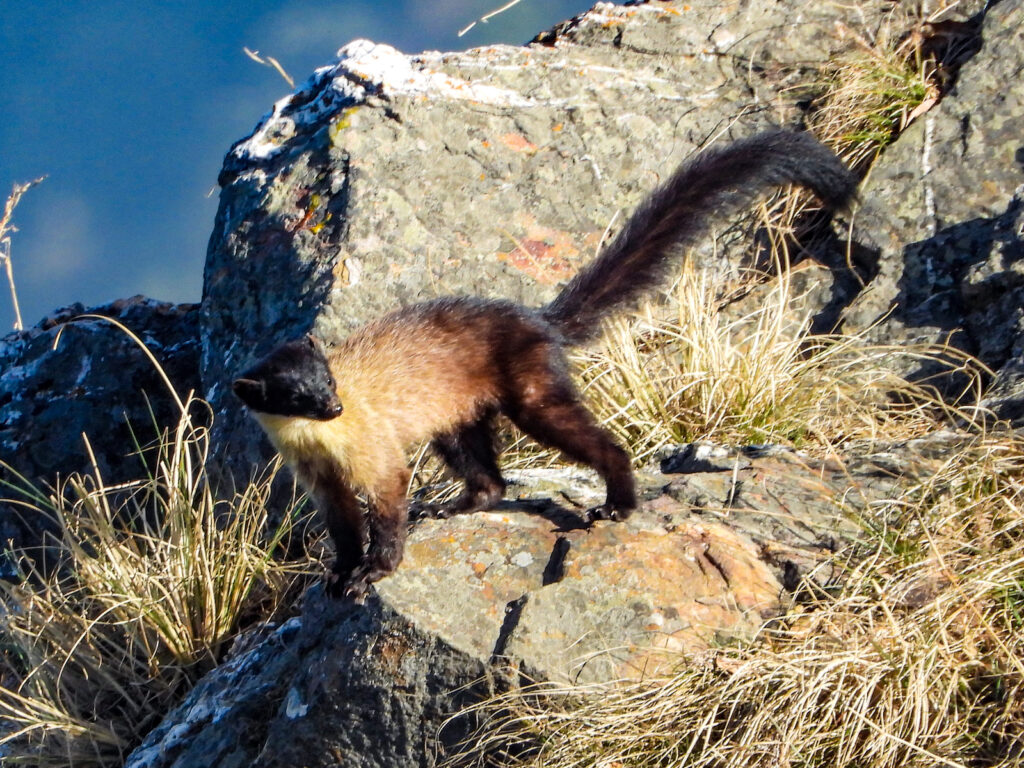
Yellow-throated Pine Marten
Mammals include the ravenous Yellow Throated Pine Martin, the nimble Himalyan Goral, the easily scared Barking Deer, the shy Himalayan Black Bear and Leopard, to name a few. Growing up in Nainital we remember seeing the Himalyan Blue Sheep or Bharal but they have migrated to higher altitudes due to loss of habitat and disturbance. Back to the lodge for tea and coffee and watch the sun set over the valley. Dinner and bonfire (weather dependent).
Day 6 – 7
Morning and afternoon guided walking safaris on one of many nature trails in and around Pangot. If you are visiting the Reserve in the Spring (Feb – April), you may see the beautiful large red flowers of the Rhododendron tree light up entire mountain sides. You can also walk to the colonial forest rest houses built during the days of the Raj. Many of these forest rest houses command an excellent view but offer minimal service and luxury. We can also get breakfast / lunch packed for you so you can have a picnic during the walk. Depending on your fitness level and enthusiasm you can walk anywhere up to 25 KM in the area in a day.
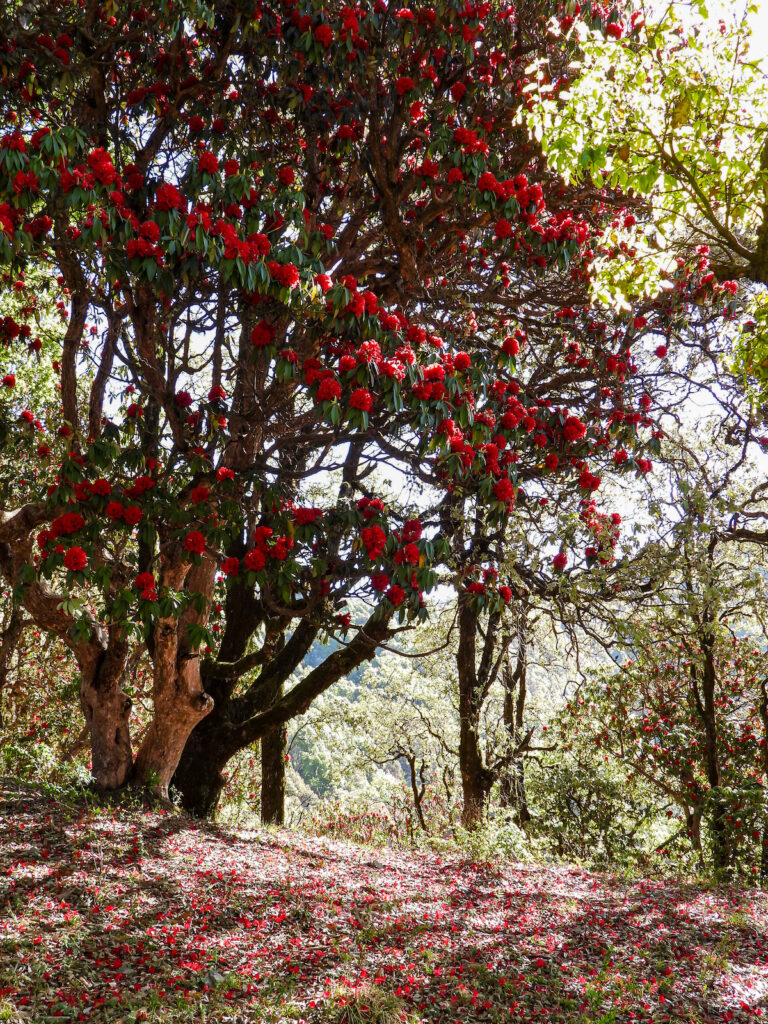
Rhododendron flower bloom in Pangot
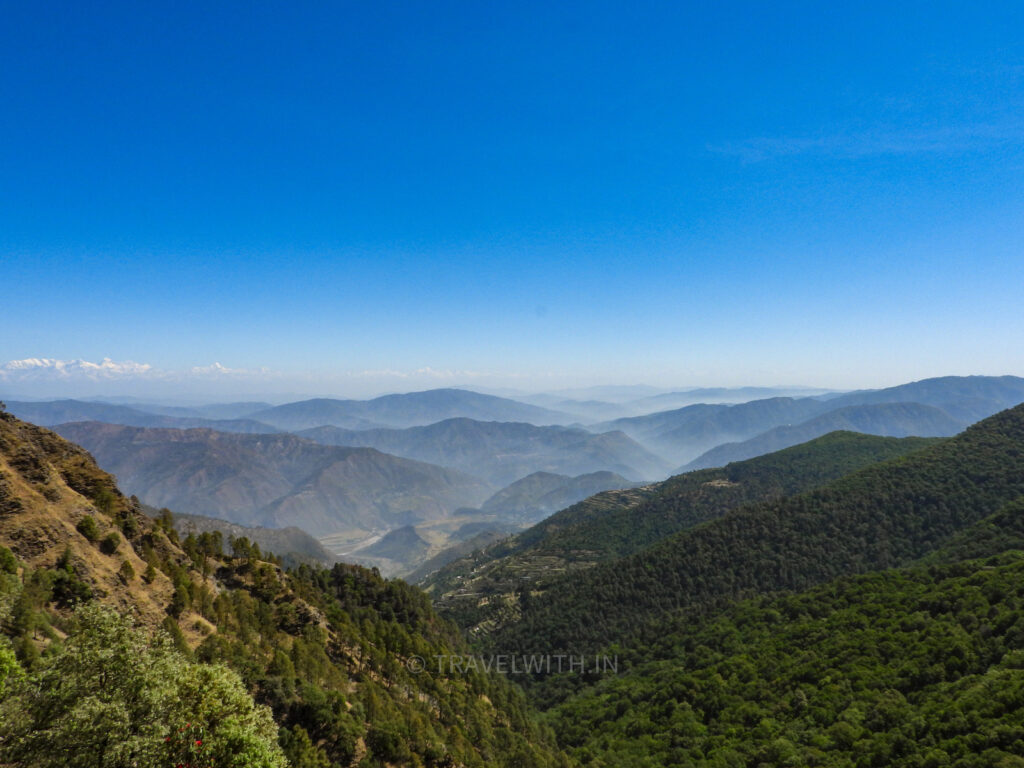
View of snow-clad mountains from Pangot
Day 8
Check out after breakfast for your onward journey. If you’re taking the train to Delhi then you should reach Kathgodam train station by 2:30PM for the Shatabdi train departing at 3:20PM (please note that train timings are subject to change). This train arrives in New Delhi railway station around 9PM.
Sometimes experienced English speaking naturalists are not available and we would be happy to accompany you and take you to our favourite places in the region that we have been visiting for decades. We have spent many years in the Nainital region and continue to do so and over the years it has become our second home.
Please Note:
• There is no guarantee that you will see the above wildlife. The river and / or sanctuary is their habitat and sightings depend on water level in the river, human interference, climatic conditions, weather and other factors, migratory pattern of birds, most of which are beyond your and my control. We will do my best to show you all there is to see.
• Smoking and drinking alcohol is strictly not permitted in National Parks and Wildlife Sanctuaries.
• Please do not throw trash on the floor even if you don’t see a trash can. Please ask your guide / walk leader to help you dispose the trash properly.
• To prevent any disturbance to wildlife, we do not encourage the use of call playback to attract birds, feeding or baiting of wildlife.
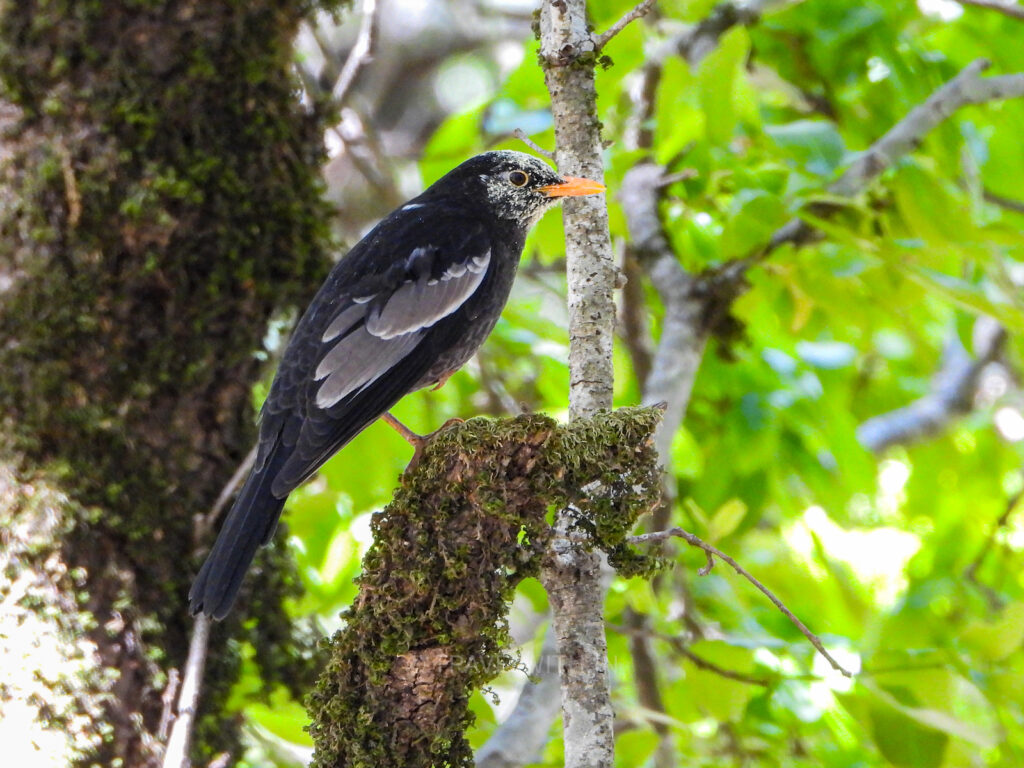
Grey-winged Blackbird
